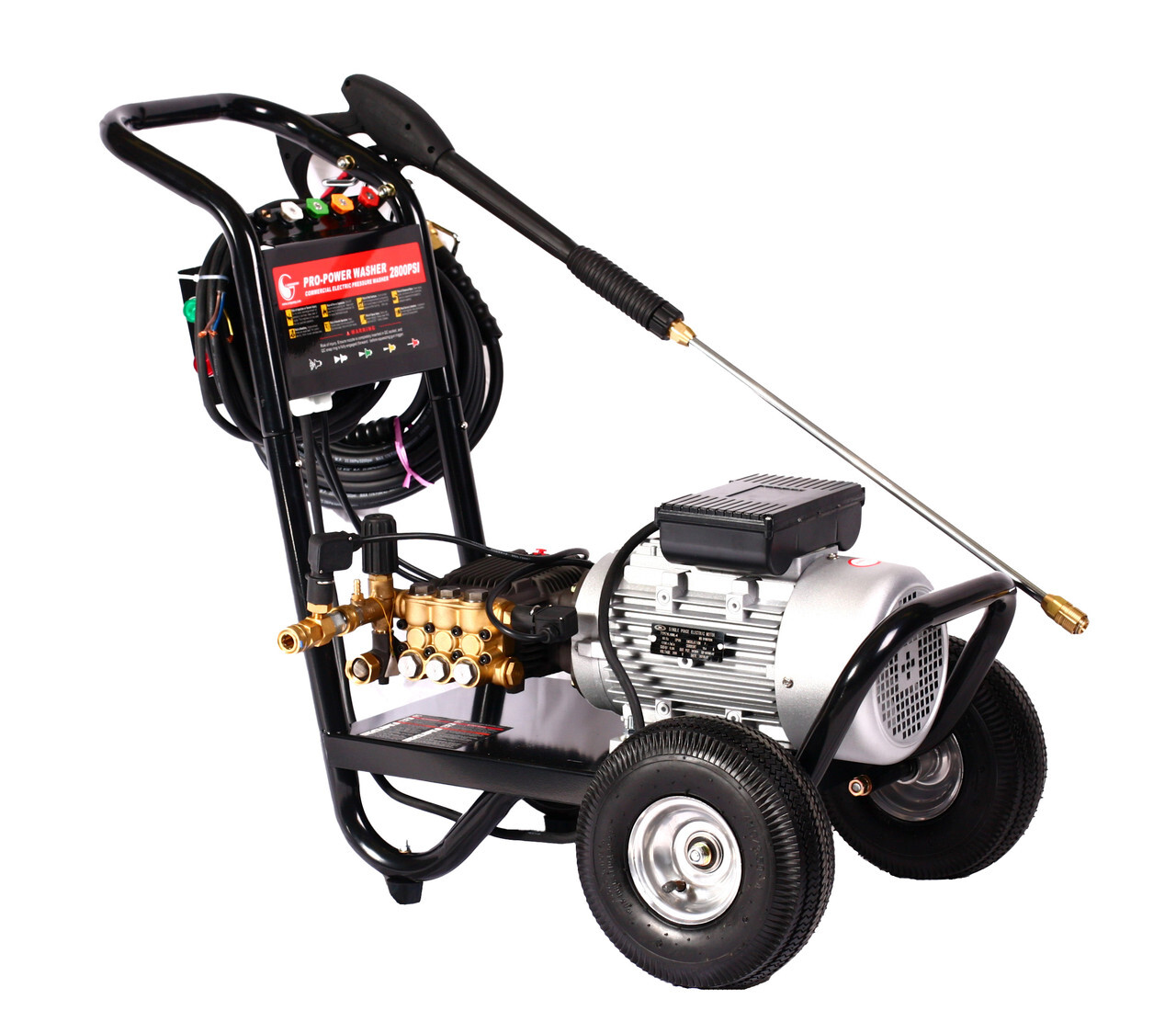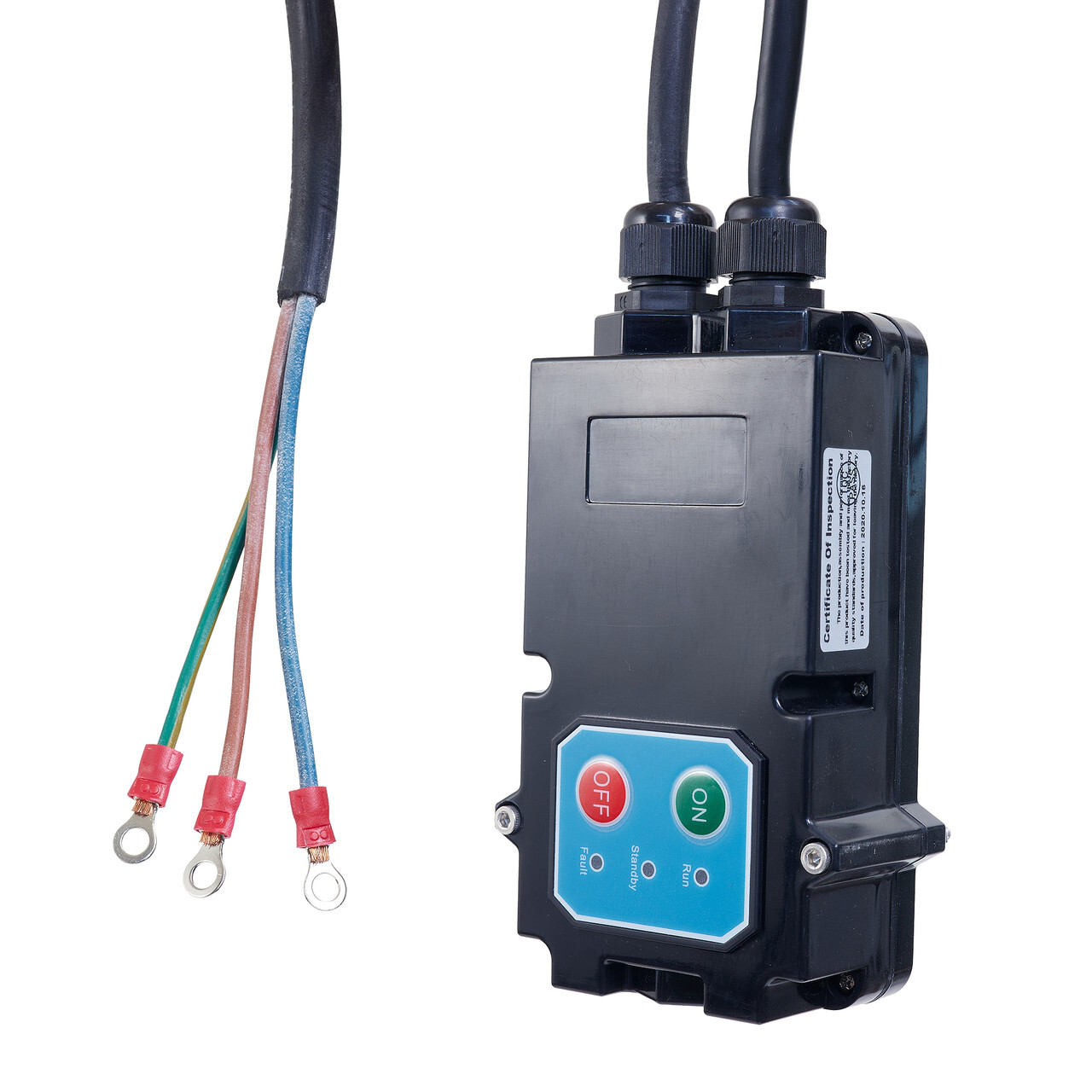Pressure Switch vs. Wireless Control: Choosing the Right Total Stop System (TSS) Electric Pressure Washer
Published by Alex and Frank on 5th Jun 2025
At Canpump, we offer two types of Total Stop System (TSS) electric pressure washers: pressure switch and wireless control. Both are designed to automatically start and stop the motor when the spray trigger is pulled or released, helping to conserve energy and extend the life of your equipment. But the way they operate — and what that means for your workflow — is quite different.
How They Work
Pressure Switch TSS
A pressure switch is a passive mechanical device that responds to water pressure in the system. When the spray trigger is released, pressure builds in the hose between the pump head and the inlet of the spray gun (or other tool). This pressure compresses a spring-loaded diaphragm inside the switch. Once the pressure reaches a set threshold, the switch activates and cuts power to the motor.

Pressure Switch TSS on a cart
Each pressure switch typically includes both a Normally Open (NO) and Normally Closed (NC) contact, allowing it to be configured with a timer and control board (usually set to 10 seconds) to manage start/stop behavior. These are color-coded based on activation pressure:
- Black: 580 psi (40 bar / 4.0 MPa)
- Red: 360 psi (25 bar / 2.5 MPa)
- Blue: 220 psi (15 bar / 1.5 MPa)
Wireless Control TSS
The wireless control system uses a spray gun with a built-in transmitter and a receiver board in the pressure washer. When the trigger is pulled, a magnet inside the handle aligns with a sensor, sending a wireless signal (up to 300 ft) to start the motor. Releasing the trigger sends another signal to stop it.

A Wireless Control module

Canpump Wireless Control spray gun
Because it’s not pressure-dependent, this system is more forgiving of small leaks and doesn’t require pressure buildup to function. However, it does require the use of the included Canpump wireless spray gun, which contains a sensor. The battery typically lasts around 2 years with heavy use, but if the gun is dropped repeatedly, the magnet may dislodge. For high-impact environments, we recommend wrapping electrical tape around the magnet housing to prevent it from popping out. If the magnet falls out, the system will enter standby mode.
Note: The wireless signal can be affected by obstacles such as concrete or metal walls between the spray gun and the receiver module. These may reduce the effective range of the system.
Pros and Cons
| Feature | Pressure Switch TSS | Wireless Control TSS |
|---|---|---|
| Accessory Compatibility | ✅ Works with any tool that opens/closes like a valve — spray guns, foot valves, jetting systems, etc. | ❌ Requires Canpump’s wireless spray gun for auto start/stop to function |
| Leak Tolerance | ❌ Sensitive to leaks between the pump head and spray gun — may prevent shut-off if pressure doesn’t build properly | ✅ More forgiving — small leaks don’t affect shut-off since it’s not pressure-based |
| Reliability | ✅ Simple mechanical system, proven over time | ✅ Reliable electronics with built-in safety timers |
| Maintenance | ⚠️ Switches wear over time; both may need replacement and rewiring | ✅ Controlled by a circuit board with no mechanical wear; minimal maintenance required |
| Safety Features | ⚠️ Depends on external timer/control board; stays powered on unless manually shut off | ✅ Auto shut-off after 30 minutes of inactivity; must be manually restarted from the module |
Which One Should You Choose?
- Choose Pressure Switch TSS if:
- You want to use a wide variety of tools and accessories
- You prefer a mechanical system with broad compatibility
- You’re comfortable with basic wiring or have an installer
- Choose Wireless Control TSS if:
- You prefer a system that’s easier to set up and use
- You’re happy using the included Canpump spray gun
- You value built-in safety features and leak tolerance
- You want peace of mind knowing the system will shut off after 30 minutes of inactivity
Final Thoughts
Both systems offer the core benefit of TSS — reducing wear on the motor and pump by stopping operation when not in use. The key difference lies in how they detect when to stop, and what that means for accessory compatibility, ease of setup, and leak sensitivity.
While the wireless control system includes built-in safety timers that shut off the unit after 30 minutes of inactivity (helpful if someone forgets to turn it off at the end of the day), it’s still best practice to turn off the water source after using either system. For pressure switch systems, the unit remains powered on until manually shut off — which could pose a risk if a leak develops while unattended.
Still unsure which one’s right for you? Reach out to our team — we’re happy to help you find the perfect fit for your cleaning needs.

